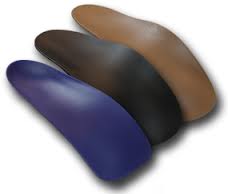 Cue the game show music … Do you know how many arches you have in your foot? One? Two? Three?
Cue the game show music … Do you know how many arches you have in your foot? One? Two? Three?
If you answered three, you’re correct. Most people think they have a single arch in their foot, but you actually have three. These arches are the:
- Medial Longitudinal Arch which runs along the inside of your foot from the ball of the foot to the heel. This arch is the largest, and the one most people recognize. This arch absorbs most of the impact when you’re walking, running or jumping.
- Lateral Longitudinal Arch which runs along the outside of your foot from the ball of the foot to the heel – parallel to the medial longitudinal arch. This arch is most visible in people who have very high arches.
- Trans-metatarsal Arch, or Transverse Arch, which runs across the midfoot from the outside to the inside, posterior to the five metatarsophalangeal joints (the toe joints that connect the toes to the foot) in the ball of your foot. This is the only arch in the foot that you cannot see.
The tarsal and metatarsal bones, along with the ligaments and tendons, form these three arches in your foot.
- Support and redistribute your body’s weight.
- Absorb the force of your body’s weight when you’re walking or running
- Provide strength and stability.
Within each arch of the foot, one bone forms the apex of the arch and holds the arch together.
- Talus in the medial longitudinal arch
- Cuboid in the lateral longitudinal arch
- Middle cuneiform in the transverse arch
These bones, along with the ligaments, create a strong, stable foot structure. Additionally, the muscles in your foot and the plantar fascia (a band of tissue that runs from your heel bone across the bottom of your foot to your toes, connecting to the metatarsal joints) provide support to your foot, too.
When your bones, muscles, ligaments or plantar fascia are out of alignment, then your foot’s strength and stability is in jeopardy – leading to possible injury and foot pain. Overpronation (walking with your ankles tilted inward too much) or supination (walking with your ankles tilted outward too much) are conditions that may occur due to structural misalignment in your feet. When overpronation or supination occur, the joints in your knees, hips and lower back have to compensate for your feet’s poor positioning during walking, leading to decreased stability. Eventually, your knees, hips and lower back will deteriorate, causing pain and possible injury.
Support Your Arches with EzWalker® Custom Orthotics
 ezWalker® Custom Performance Orthotics are biomechanically designed to properly support the medial, lateral, and transverse arches of your feet by redistributing your body’s weight evenly over both feet and bringing your whole body into proper alignment. Additionally, by supporting your arches, these custom orthotics reduce the shock forces your feet experience every day, providing you with pain relief and comfort for your entire body.
ezWalker® Custom Performance Orthotics are biomechanically designed to properly support the medial, lateral, and transverse arches of your feet by redistributing your body’s weight evenly over both feet and bringing your whole body into proper alignment. Additionally, by supporting your arches, these custom orthotics reduce the shock forces your feet experience every day, providing you with pain relief and comfort for your entire body.
For more information on ezWalker® Custom Orthotics, visit our website. These custom orthotics are ultra thin and ¾ length, so they can transfer easily from shoe to shoe – saving you money. Order your ezWalker® Custom Performance Orthotics today!
Because … when your feet feel good, you feel good.


